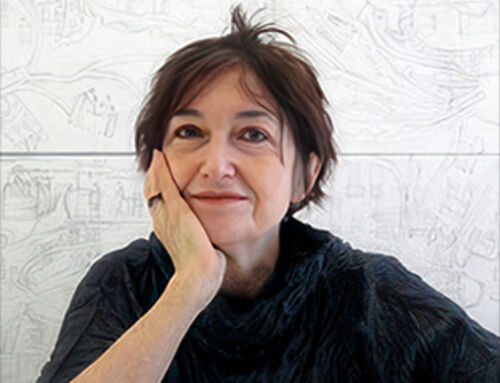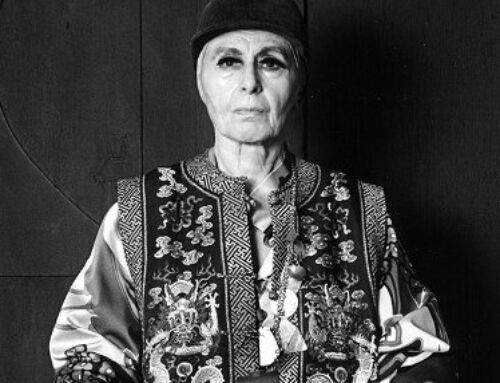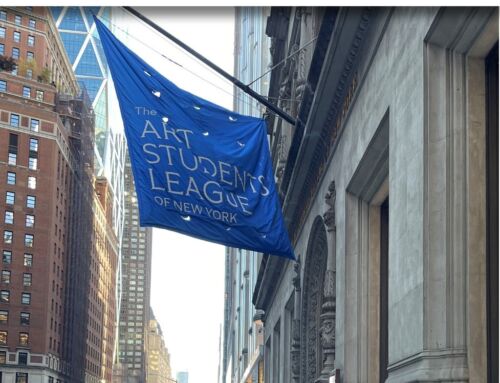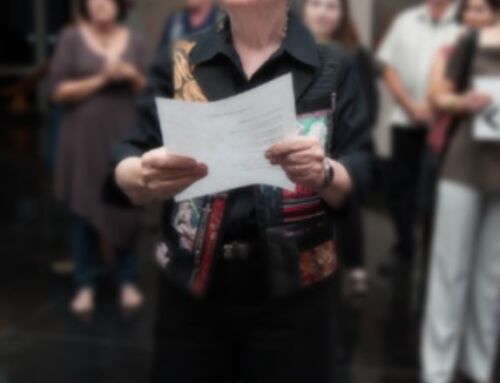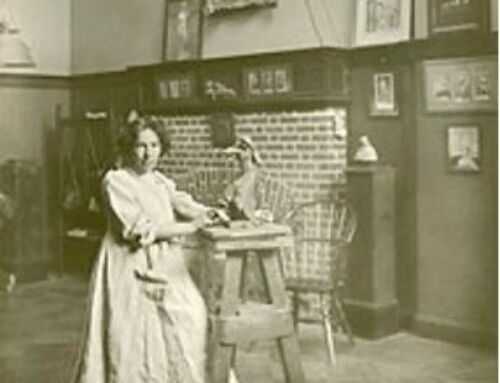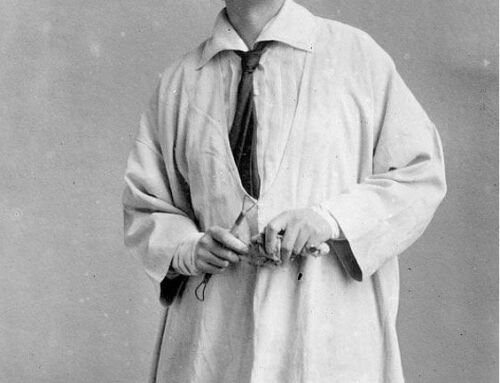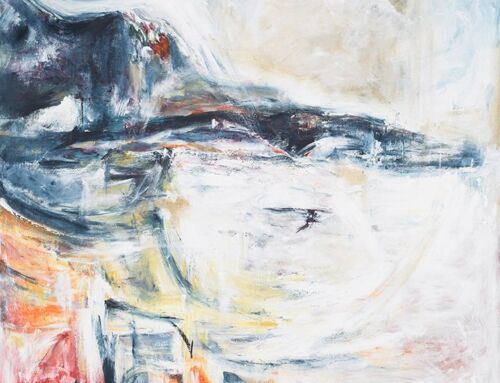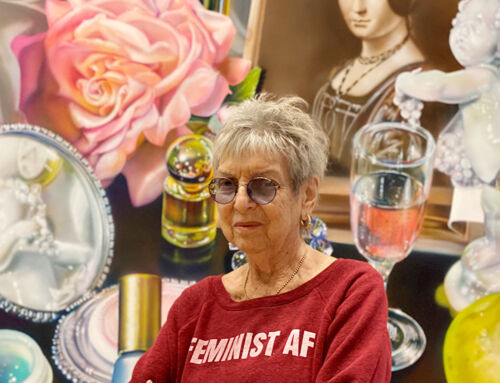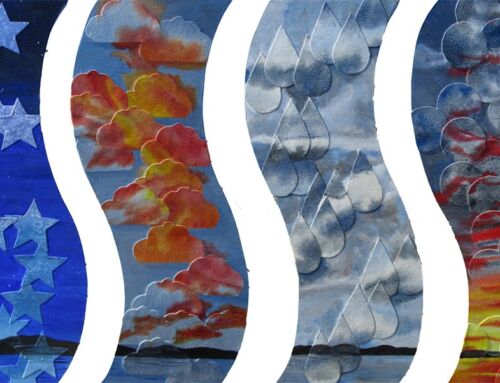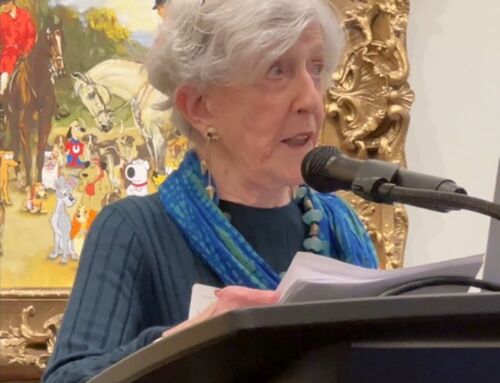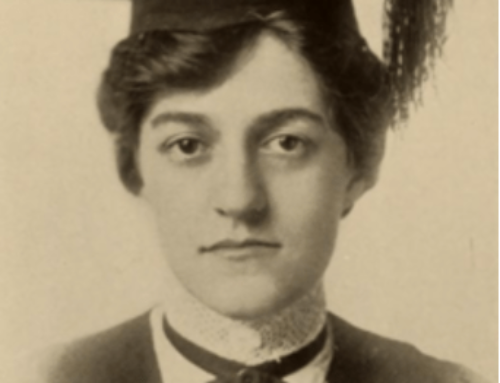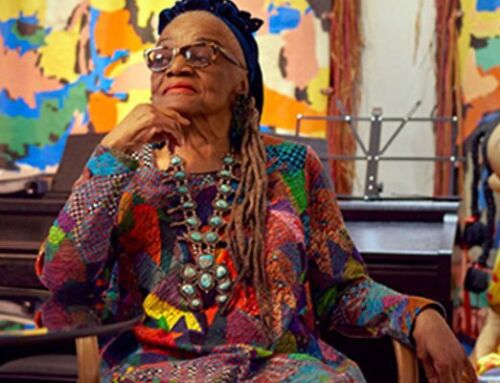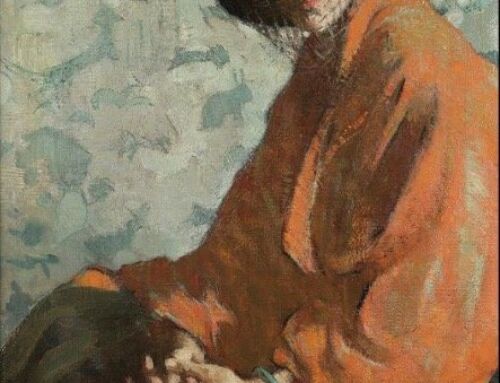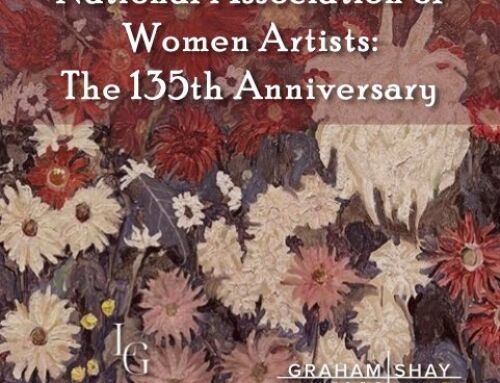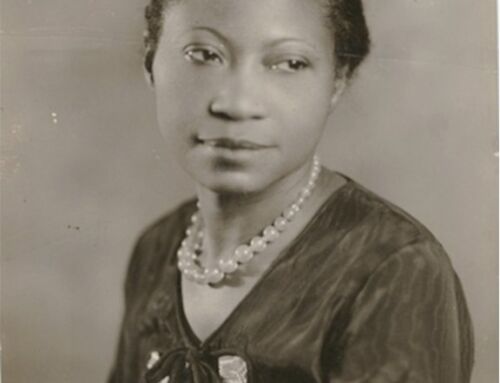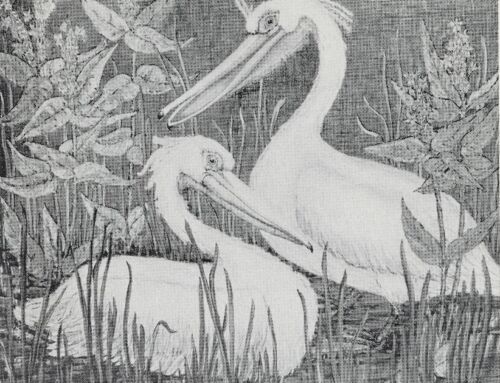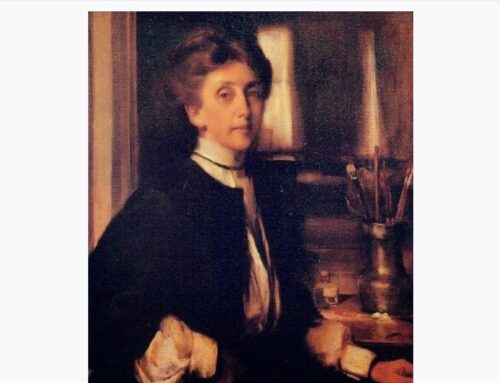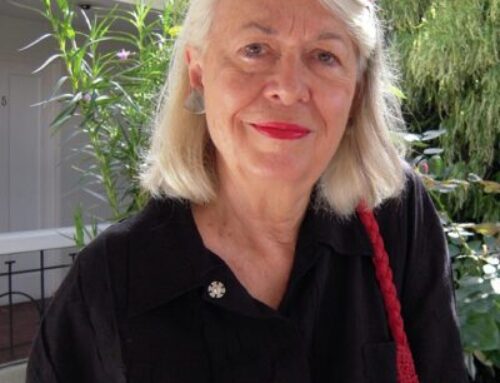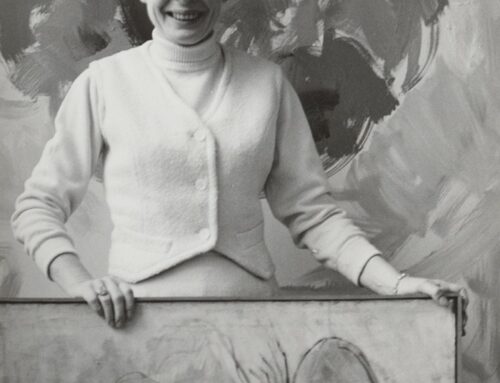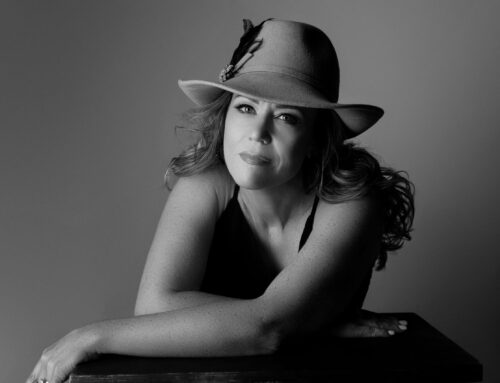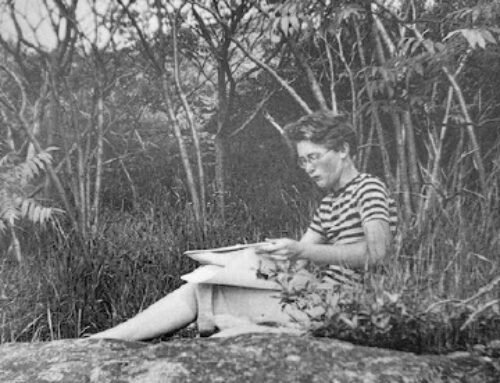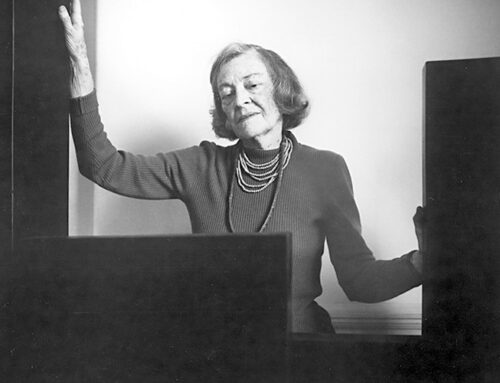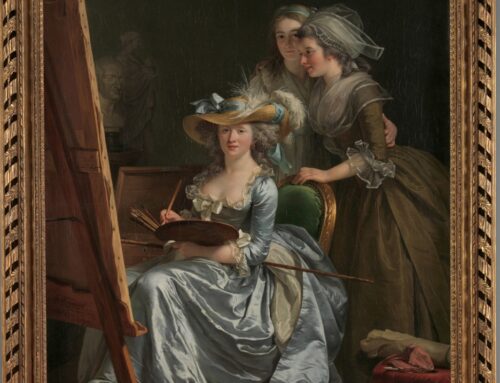NAWA Luminaries – Harriet Whitney Frishmuth (1880-1980)
NAWA Luminaries is the intersection of NAWA’s Historical Research and current events around the United States, highlighting celebrated NAWA members.
NAWA Luminaries
Graham Shay 1857, at 17 East 67th Street in New York, is exhibiting A Curated Selection of Twentieth Century American Paintings &Sculpture through August 30, 2024. Among the esteemed artists in the show are four historical members of NAWA: Harriet Whitney Frishmuth, Janet Scudder, Bessie Potter Vonnoh, and Anna Walinska. These artists have significantly contributed to the twentieth-century American art scene, and their works are a testament to their artistic prowess. The acclaimed sculptor Harriet Whitney Frishmuth is the subject of this celebration of NAWA Luminaries.

Harriet Whitney Frishmuth, with The Dancers (1921) and The Star (1918). Unknown date, unknown photographer. Special Collections Research Center, Syracuse University Library, Syracuse, N.Y.
Harriet Whitney Frishmuth
Harriet was born to Frank Benono Frishmuth (1848-1935) and Louise Otto Berens (1853-1924) on September 17, 1880, in an upper-middle-class family of physicians. Harriet’s parents separated when she was eight years old, and she moved to Europe with her mother and two older sisters; the girls enjoyed a Parisian education and summers in Switzerland for the next six years. In 1894, Frishmuth returned to Pennsylvania to live with her maternal grandmother in the Mount Airy section of Philadelphia.
In 1898, Frishmuth returned to Europe with her mother. They roamed from Dresden to Vienna, Italy to Switzerland. Harriet discovered sculpture while her mother was recovering from an illness in Switzerland. She studied with Lucy Brownson Hinton, a student of Launt Thompson in New York, and Henri Chapu and John-Baptiste Carpeaux in Paris. Harriet’s dedication to her craft led her to move to Paris in 1900 to study with August Rodin at the École des Beaux-Arts and then with Gauquier and Injalbert, exhibiting at the Paris Salon, the official art exhibition of the Académie des Beaux-Arts in 1903. After working in Berlin as an assistant to Professor Cuno von Euchtritz, she pursued further studies with Herman A. MacNeil and Gutzon Borglum at the Art Student’s League in New York. She studied dissection for two years at the College of Physicians and Surgeons to better understand anatomy.
Harriet designed small items early in her career, such as figural bookends and ashtrays. She was critical of Modern art, instead focusing on female nudes in the Beaux Art style. Her reputation and career grew steadily, and in 1908, Harriet opened a studio in Manhattan. Her first important commission in 1910 was a portrait relief of Dr. Abraham Jacobi for the New York County Medical Society. In 1912, she participated in an important group exhibition of women sculptors at Gorham Galleries, including Anna Hyatt and Gertrude Vanderbilt Whitney, Women’s Art Club members (the founding organization of NAWA). In 1914, Harriet joined the Women’s Art Club (NAWA). At this time, her work concentrated on nude, muscular male figures. She soon shifted her focus to the female figure, creating several garden sculptures, one of which the Panama-Pacific International Exposition in San Francisco featured in 1915. The Saki Sundial, modeled in Paris in 1913, begins the series of lyrical figures for which she is well known and celebrated.

Desha Delteil, Genthe photograph collection, Library of Congress, Prints and Photographs Division.
Although she sometimes used children as models, she preferred professional dancers and models for her figural sculptures. Her principal model, Desha Delteil, a Yugoslav-born dancer, played a key inspirational role in the 1920s at the peak of Frishmuth’s career and was the figure used for The Vine. Photographs by Arnold Genthe show Desha Delteil holding the pose in The Vine.

Harriet Whitney Frishmuth, The Vine, 1923, bronze, 83 1/2 in. (212.1 cm) height, Smithsonian American Art Museum, Gift of Mr. and Mrs. Maurice Cunniffe, 2014.60
Conceived first as a statuette in Frishmuth’s studio in New York City, The Vine became the artist’s most commercially successful work, with an edition of 396 casts. In 1923, Harriet enlarged the sculpture for the Exhibition of American Sculpture organized by the National Sculpture Society’s celebration of its thirtieth anniversary. It is currently in the permanent collection of the Metropolitan Museum of Art, New York.
Fantasie was awarded the Watrous Gold Medal at the National Academy of Design in 1922, The Vine the Shaw Memorial Prize in 1923, and the Joan of Arc Silver Medal at the 1924 Annual Exhibition of the National Association of Women Painters and Sculptors (former name of NAWA). These accolades are a testament to the respect and admiration Harriet garnered in her career.

Sun Dial, sculpture, The National Association of Women Painters
and Sculptors Thirty-fourth Annual Exhibition, 1925.
In 1924, Harriet created a marble bust of Woodrow Wilson for the Virginia State Capitol in Richmond. She exhibited Sun Dial in the National Association of Women Painters and Sculptors (NAWA) annual exhibition in 1925, and in 1928, her first solo exhibition at New York’s Grand Central Art Galleries featured Joy of the Waters (1917, remodeled in 1920), currently in the Graham Shay 1857 show.
Harriet was also a teacher. Maude Sherwood Jewett and Eleanor Mary Mellon, both National Association of Women Painters and Sculptors (NAWA) members, were among her pupils.
The Depression and changing tastes negatively affected her career. The economic downturn and the shift in artistic preferences during this period posed significant challenges to Frishmuth’s career. This led to a decline in her creative output, the eventual closure of her studio in 1937, and her return to Philadelphia. In 1947, Harriet met Ruth Talcott through a mutual friend, and Ruth became Harriet’s secretary, bookkeeper, and eventually her life companion. In 1951, they bought the first of two homes in Connecticut.
Harriet spent the remainder of her life arranging exhibitions at the National Academy of Design and the Pennsylvania Academy of Fine Arts and selling her works. Through the years, she maintained close ties to her muse, Desha; they continued to visit one another as Harriet traveled to Paris and Desha to the United States. Harriet died in Waterbury, Connecticut, in 1980 at ninety-nine. Desha died seven months later.
Sources:
https://americanart.si.edu/blog/harriet-whitney-frishmuths-vine
https://archives.libraries.rutgers.edu/repositories/11/resources/362
https://www.aristos.org/frishmuth.htm
https://collection.thewestmoreland.org/artist-maker/info/172
https://mcclungmuseum.utk.edu/2022/06/28/the-work-of-harriet-whitney-frishmuth/
https://en.wikipedia.org/wiki/Harriet_Whitney_Frishmuth
Susan M. Rostan, M.F.A , Ed.D. Co-Leader: NAWA Historical Research Team. Website
Signature Member of the National Association of Women Artists
NAWA. Empowering Women Artists Since 1889




